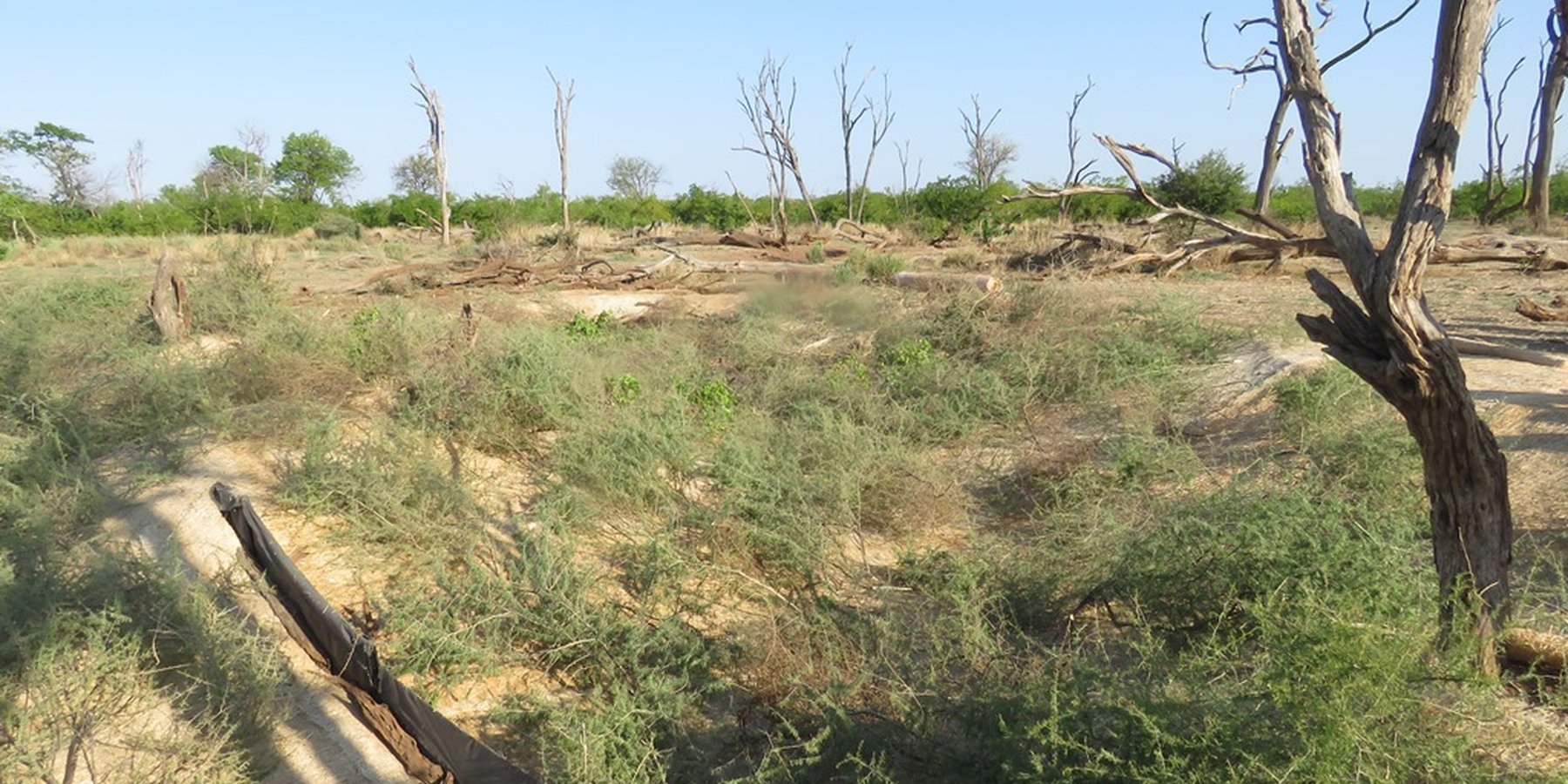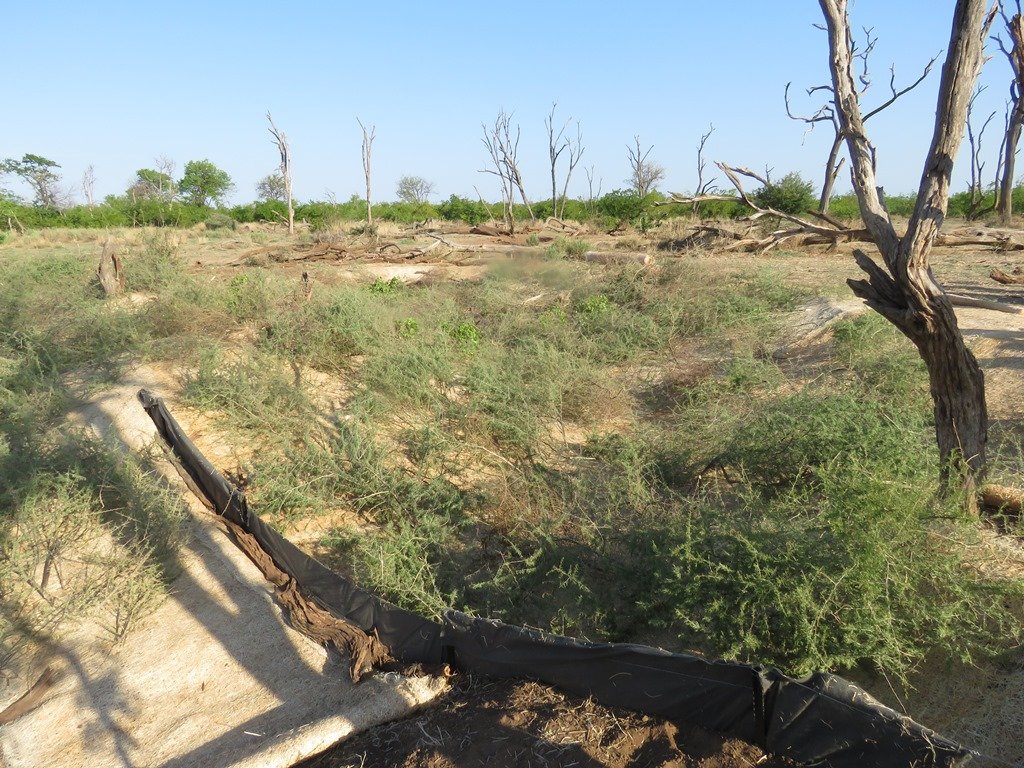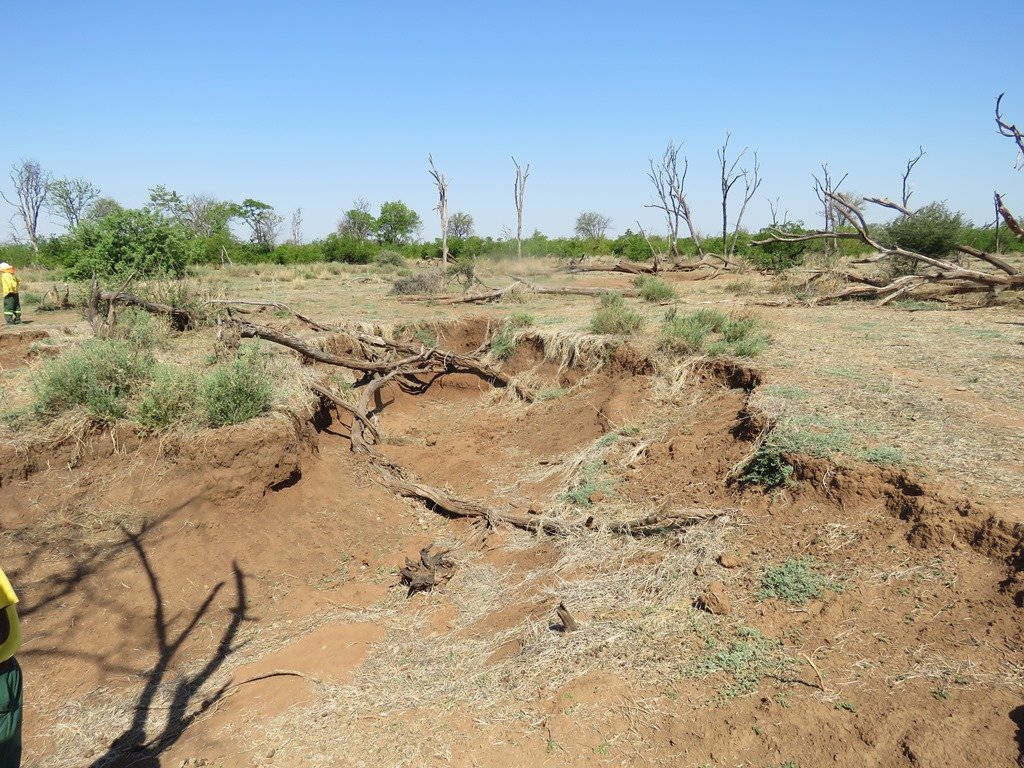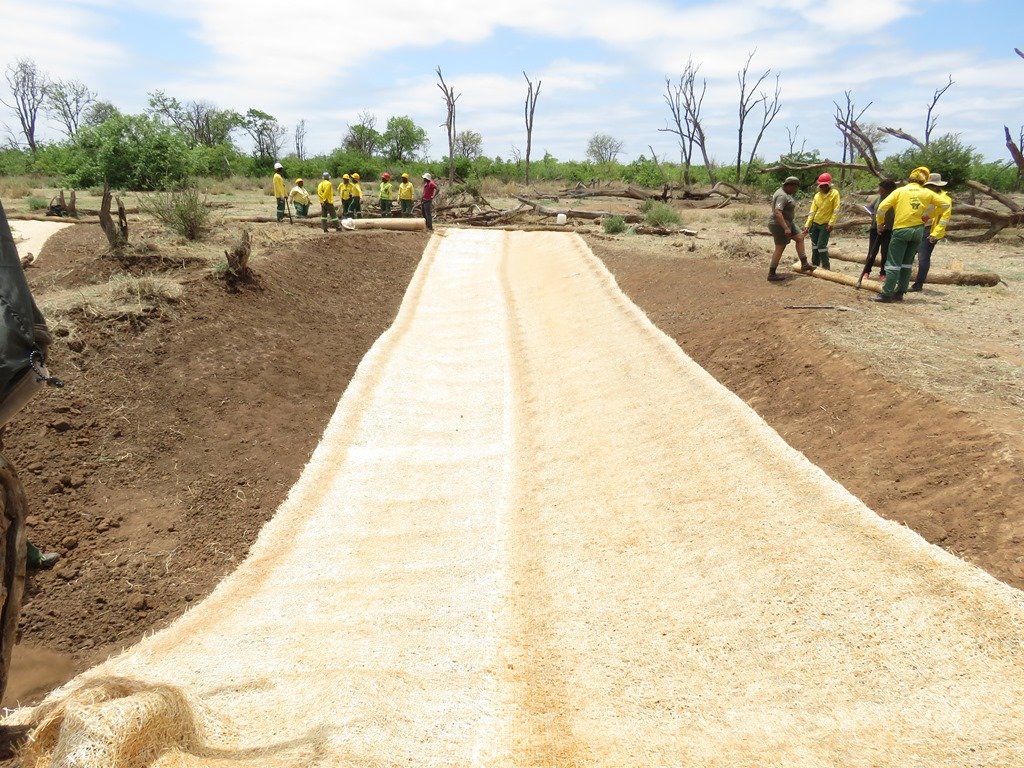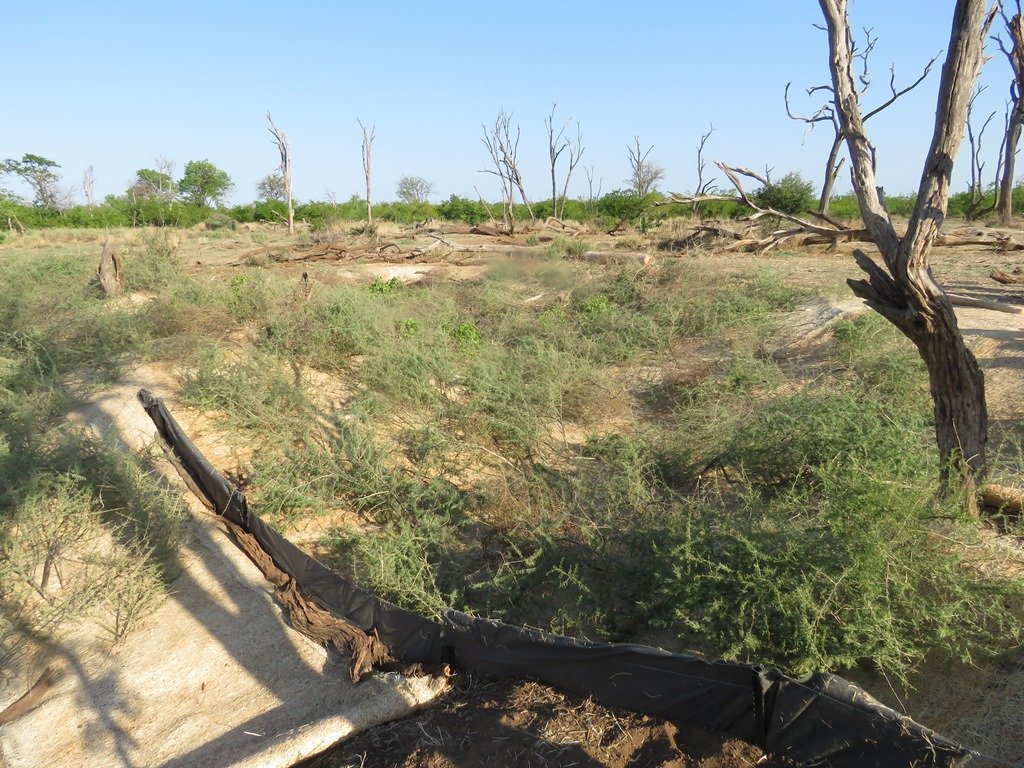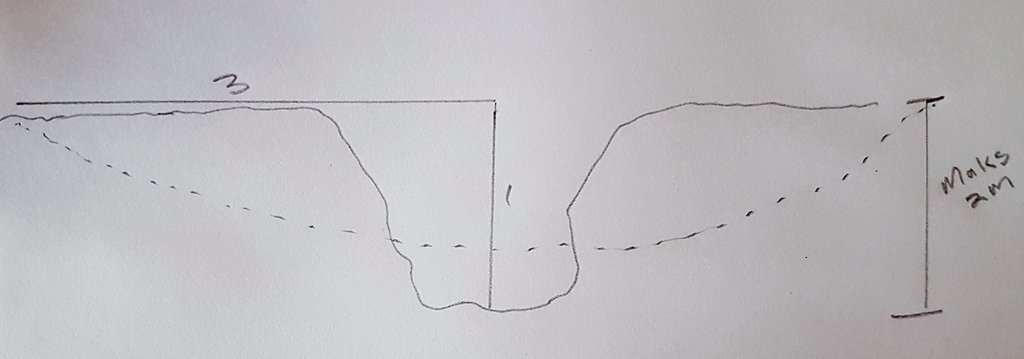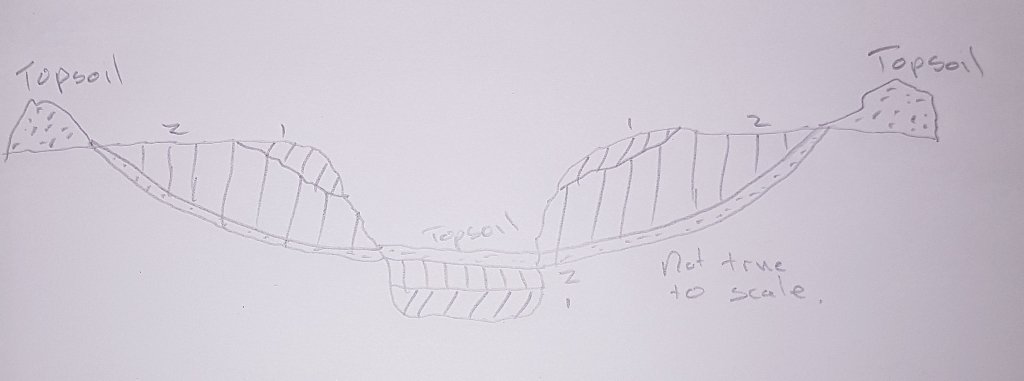Reshaping of gully erosion through integration of silt fences, erosion blankets and brush packing [南非]
- 创建:
- 更新:
- 编制者: Dirk Pretorius
- 编辑者: –
- 审查者: Rima Mekdaschi Studer
Reshaping of gullies
technologies_3359 - 南非
- Reshaping of gully erosion through integration of silt fences, erosion blankets and brush packing: Aug. 10, 2018 (inactive)
- Reshaping of gully erosion through integration of silt fences, erosion blankets and brush packing: Feb. 19, 2019 (inactive)
- Reshaping of gully erosion through integration of silt fences, erosion blankets and brush packing: Nov. 2, 2021 (public)
- Reshaping of gully erosion through integration of silt fences, erosion blankets and brush packing: April 20, 2018 (inactive)
- Reshaping of gully erosion through integration of silt fences, erosion blankets and brush packing: March 20, 2018 (inactive)
- Reshaping of gully erosion with integration of silt fences, erosion blankets and brush packing: Feb. 2, 2018 (inactive)
查看章节
全部展开 全部收起1. 一般信息
1.2 参与该技术评估和文件编制的资源人员和机构的联系方式
关键资源人
SLM专业人员:
Buckle Jacob
+27828207083
JBuckle@environment.gov.za
Department of Environmental Affairs - South Africa
14 Loop Street, Cape Town, South Africa, 8000
南非
有助于对技术进行记录/评估的项目名称(如相关)
Working on Ecosystems (Natural Resource Management Programmes – DEA, South Africa)有助于对技术进行记录/评估的机构名称(如相关)
SMC Synergy (SMC Synergy) - 南非1.3 关于使用通过WOCAT记录的数据的条件
(现场)数据是什么时候汇编的?:
17/01/2018
编制者和关键资源人员接受有关使用通过WOCAT记录数据的条件。:
是
1.4 所述技术的可持续性声明
这里所描述的技术在土地退化方面是否存在问题,导致无法被认为是一种可持续的土地管理技术?:
否
1.5 请参阅有关SLM方法的问卷
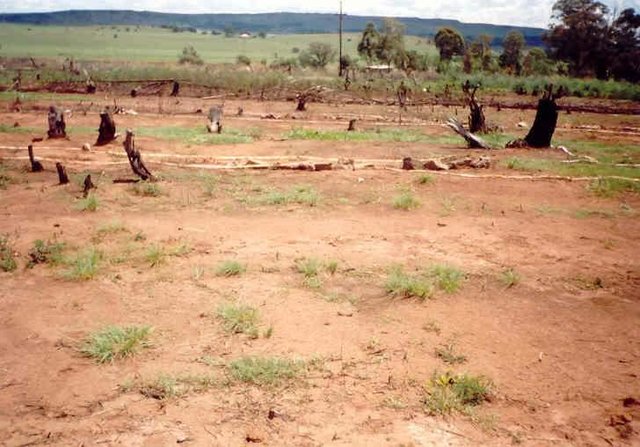
Working for Water [南非]
Government funded restoration/rehabilitation initiative as part of Working for Water project. Aim was to eradicate alien invasive.
- 编制者: Klaus Kellner
2. SLM技术的说明
2.1 技术简介
技术定义:
The rehabilitation of active gully erosion by re-sloping the banks of the gully in an effort to manage the energy of the water entering the system. Bare soil is protected from erosion by covering it with erosion blankets, brush packing and the establishment of silt fences.
2.2 技术的详细说明
说明:
This gully reshaping project was conducted in the Mapungubwe National Park in the Limpopo Province of South Africa. The area receives summer rainfall with an annual average of around 600 to 700 mm. Thunderstorms are common. Due to overgrazing on highly erodible soils, gully headcuts are actively migrating upstream. This conservation technology can be considered for any gully of up to 2 meters in depth (even on duplex - highly erodible soils - gypsum must, however, be added to the relocated topsoil in this case). The purpose of re-sloping is to reduce the gradient of gully heads and sidewalls, thereby reducing the energy of runoff water. This also leads to enhanced vegetation cover and reduced sediment transport in the gully. Resloping of gullies is performed in stages:
Stage One: Remove all viable and useful plants in and around the active gully system that will be affected by the reshaping – store these for replanting.
Stage Two: Relocate the usable topsoil to the edge of the gully reshape footprint.
Stage Three: Reshaping of the gully banks to a 1:3 slope (relative to the new valley floor level after refilling with bank material - see figure). Start by removing the top of the bank and placing it on the gully floor. Make sure to compact the soil from the banks - breaking up clods to smaller particles. Continue to remove more of the bank material and compact it in layers to form a disk shape profile (cross section - see sketch).
Stage Four: Spread the topsoil evenly over the newly created gentle sloping profile. Add indigenous grass seed (if available: if not, exotic grasses).
Stage Five: Construct silt fences (made of fabric filter cloth - Geotextile) above the water entry points and inside the newly formed profile (around 10 m apart).
Stage Six: Cover the area with soil erosion blankets (bio-jute) and/or mulch and/or brush packing with thorny local woody biomass.
Stage Seven: Replant recovered plants - protect the area with fences if possible until grass cover established.
2.3 技术照片
2.5 已应用该技术的、本评估所涵盖的国家/地区/地点
国家:
南非
区域/州/省:
Limpopo province
有关地点的进一步说明:
Mapungubwe National Park
Map
×2.6 实施日期
注明实施年份:
2017
2.7 技术介绍
详细说明该技术是如何引入的:
- 通过项目/外部干预
注释(项目类型等):
Working on Ecosystem Services
3. SLM技术的分类
3.1 该技术的主要目的
- 减少、预防、恢复土地退化
- 保护生态系统
- 结合其他技术保护流域/下游区域
- 降低灾害风险
- 创造有益的社会影响
3.2 应用该技术的当前土地利用类型

牧场
粗放式放牧场:
- 经营牧场

水道、水体、湿地
- 排水管道、水道
- 沼泽、湿地
主要产品/服务:
Sediment trap, alluvial flood plain
3.3 有关土地利用的更多信息
该技术所应用土地的供水:
- 雨养
每年的生长季节数:
- 1
具体说明:
Summer rainfall - October to April
牲畜密度(如相关):
Hi - game (various species)
3.4 该技术所属的SLM组
- 改良的地面/植被覆盖
- 横坡措施
- 地表水管理(泉、河、湖、海)
3.5 技术传播
具体说明该技术的分布:
- 适用于特定场所/集中在较小区域
3.6 包含该技术的可持续土地管理措施

结构措施
- S6:墙、障碍物、栅栏、围墙

管理措施
- M3:根据自然和人文环境进行布局
3.7 该技术强调的主要土地退化类型

土壤水蚀
- Wg:冲沟侵蚀/沟蚀
- Wo:场外劣化效应

水质恶化
- Hp:地表水水质下降
- Hw:湿地缓冲能力下降
3.8 防止、减少或恢复土地退化
具体数量名该技术与土地退化有关的目标:
- 减少土地退化
- 修复/恢复严重退化的土地
4. 技术规范、实施活动、投入和成本
4.1 该技术的技术图纸
4.2 技术规范/技术图纸说明
Rehabilitation of gully erosion - 0.5 m to 2 m deep.
Reslope gully banks from vertical to approximately 30-degree slope.
Silt fences are established above gull head-cut - silt fences inside the reshaped gully - in the region of 10 m apart.
Brush packing with thorny biomass to prevent grazing and provide a micro-climate for grass seed to germinate and establish.
4.3 有关投入和成本计算的一般信息
具体说明成本和投入是如何计算的:
- 每个技术区域
注明尺寸和面积单位:
0.017 ha
注明美元与当地货币的汇率(如相关):1美元=:
12.0
注明雇用劳工的每日平均工资成本:
R140/day
4.4 技术建立活动
| 活动 | 措施类型 | 时间 | |
|---|---|---|---|
| 1. | Remove plants | 植物性的 | 2 to 3 months before the summer rain |
| 2. | Remove topsoil | 结构性的 | 2 to 3 months before the summer rain |
| 3. | Reshaping, compacting, layering | 结构性的 | 2 to 3 months before the summer rain |
| 4. | Reseeding | 植物性的 | 2 to 3 months before the summer rain |
| 5. | Soil erosion blankets installation | 结构性的 | 2 to 3 months before the summer rain |
| 6. | Silt fences | 结构性的 | 2 to 3 months before the summer rain |
| 7. | Brush packing | 结构性的 | 2 to 3 months before the summer rain |
4.5 技术建立所需要的费用和投入
| 对投入进行具体说明 | 单位 | 数量 | 单位成本 | 每项投入的总成本 | 土地使用者承担的成本% | |
|---|---|---|---|---|---|---|
| 劳动力 | Unskilled labour (including transport) | per day | 60.0 | 240.0 | 14400.0 | |
| 设备 | Picks, spades, hand compactor, pliers, hopper, bow saws, hammer, wheel barrow (renting the equipment) | per day | 35.0 | 20.0 | 700.0 | |
| 植物材料 | Grass seed mix | per kilogram | 2.0 | 75.0 | 150.0 | |
| 施工材料 | Erosion blankets | per square meter | 170.0 | 15.0 | 2550.0 | |
| 施工材料 | Silt fences | per meter | 16.0 | 15.0 | 240.0 | |
| 技术建立所需总成本 | 18040.0 | |||||
如果土地使用者负担的费用少于100%,请注明由谁负担其余费用:
Department of Environmental Affairs - NRM programmes
4.6 维护/经常性活动
| 活动 | 措施类型 | 时间/频率 | |
|---|---|---|---|
| 1. | After floods restore site (silt fences and brush packing) | 结构性的 | After floods |
4.7 维护/经常性活动所需要的费用和投入(每年)
| 对投入进行具体说明 | 单位 | 数量 | 单位成本 | 每项投入的总成本 | 土地使用者承担的成本% | |
|---|---|---|---|---|---|---|
| 劳动力 | Restoration of site after flooding events | per day | 6.0 | 240.0 | 1440.0 | |
| 设备 | Tools to restore fences and brush packing | per day | 3.0 | 20.0 | 60.0 | |
| 施工材料 | Silt fences | per day | 10.0 | 15.0 | 150.0 | |
| 技术维护所需总成本 | 1650.0 | |||||
如果土地使用者负担的费用少于100%,请注明由谁负担其余费用:
Department of Environmental Affairs - NRM programmes
4.8 影响成本的最重要因素
描述影响成本的最决定性因素:
Labour availability, soil hardness, availability of material, transport cost
5. 自然和人文环境
5.1 气候
年降雨量
- < 250毫米
- 251-500毫米
- 501-750毫米
- 751-1,000毫米
- 1,001-1,500毫米
- 1,501-2,000毫米
- 2,001-3,000毫米
- 3,001-4,000毫米
- > 4,000毫米
指定年平均降雨量(若已知),单位为mm:
650.00
有关降雨的规范/注释:
Summer thunderstorms
农业气候带
- 半干旱
Hot summers and dry winters
5.2 地形
平均坡度:
- 水平(0-2%)
- 缓降(3-5%)
- 平缓(6-10%)
- 滚坡(11-15%)
- 崎岖(16-30%)
- 陡峭(31-60%)
- 非常陡峭(>60%)
地形:
- 高原/平原
- 山脊
- 山坡
- 山地斜坡
- 麓坡
- 谷底
垂直分布带:
- 0-100 m a.s.l.
- 101-500 m a.s.l.
- 501-1,000 m a.s.l.
- 1,001-1,500 m a.s.l.
- 1,501-2,000 m a.s.l.
- 2,001-2,500 m a.s.l.
- 2,501-3,000 m a.s.l.
- 3,001-4,000 m a.s.l.
- > 4,000 m a.s.l.
说明该技术是否专门应用于:
- 凹陷情况
关于地形的注释和进一步规范:
Flood plane
5.3 土壤
平均土层深度:
- 非常浅(0-20厘米)
- 浅(21-50厘米)
- 中等深度(51-80厘米)
- 深(81-120厘米)
- 非常深(> 120厘米)
土壤质地(表土):
- 中粒(壤土、粉土)
土壤质地(地表以下> 20厘米):
- 细粒/重质(粘土)
表土有机质:
- 高(>3%)
5.4 水资源可用性和质量
地下水位表:
< 5米
地表水的可用性:
中等
水质(未处理):
不可用
水的盐度有问题吗?:
是
该区域正在发生洪水吗?:
是
规律性:
偶然
5.5 生物多样性
物种多样性:
- 高
栖息地多样性:
- 低
5.6 应用该技术的土地使用者的特征
其它(具体说明):
Protected area
生产系统的市场定位:
- 混合(生计/商业
非农收入:
- 低于全部收入的10%
相对财富水平:
- 贫瘠
个人或集体:
- 员工(公司、政府)
机械化水平:
- 手工作业
性别:
- 女人
- 男人
土地使用者的年龄:
- 中年人
说明土地使用者的其他有关特征:
People are brought into the protected areas to work on the rehabilitation projects.
5.7 应用该技术的土地使用者拥有或租用的平均土地面积
- < 0.5 公顷
- 0.5-1 公顷
- 1-2 公顷
- 2-5公顷
- 5-15公顷
- 15-50公顷
- 50-100公顷
- 100-500公顷
- 500-1,000公顷
- 1,000-10,000公顷
- > 10,000公顷
这被认为是小规模、中规模还是大规模的(参照当地实际情况)?:
- 中等规模的
注释:
National park
5.8 土地所有权、土地使用权和水使用权
土地所有权:
- 州
土地使用权:
- 社区(有组织)
- State
- Government land
5.9 进入服务和基础设施的通道
健康:
- 贫瘠
- 适度的
- 好
教育:
- 贫瘠
- 适度的
- 好
技术援助:
- 贫瘠
- 适度的
- 好
就业(例如非农):
- 贫瘠
- 适度的
- 好
市场:
- 贫瘠
- 适度的
- 好
能源:
- 贫瘠
- 适度的
- 好
道路和交通:
- 贫瘠
- 适度的
- 好
饮用水和卫生设施:
- 贫瘠
- 适度的
- 好
金融服务:
- 贫瘠
- 适度的
- 好
6. 影响和结论性说明
6.1 该技术的现场影响
社会经济效应
生产
饲料生产
注释/具体说明:
Natural fodder for game
土地管理
注释/具体说明:
Habitat for wildlife and plants improve
水资源可用性和质量
家畜用水的可用性
注释/具体说明:
Improved water quantity for game
家畜用水的质量
注释/具体说明:
Better quality water for game
收入和成本
收入来源的多样性
注释/具体说明:
Improve aesthetic value for tourism
其它社会经济效应
Job creation
注释/具体说明:
Job creation for communities outside the protected area
Improved skill levels
注释/具体说明:
Community receive training in rehabilitation methods
社会文化影响
食品安全/自给自足
注释/具体说明:
Improved income for communities
娱乐机会
注释/具体说明:
Aesthetic improvement for tourism
国家机构
注释/具体说明:
Improvement of the protected area for SANPARKS
SLM/土地退化知识
注释/具体说明:
Training received by communities
生态影响
水循环/径流
水量
水质
地表径流
土壤
土壤覆盖层
土壤流失
土壤堆积
土壤结壳/密封
土壤有机物/地下C
生物多样性:植被、动物
植被覆盖
生物量/地上C
植物多样性
栖息地多样性
减少气候和灾害风险
洪水影响
干旱影响
微气候
6.2 该技术的场外影响已经显现
下游淤积
缓冲/过滤能力
有关影响评估的意见:
The accumulative effect of treating all gully head-cut erosion in the floodplain will have an effect on sediment loads in the Limpopo river
6.3 技术对渐变气候以及与气候相关的极端情况/灾害的暴露和敏感性(土地使用者认为的极端情况/灾害)
渐变气候
渐变气候
| 季节 | 气候变化/极端天气的类型 | 该技术是如何应对的? | |
|---|---|---|---|
| 年温度 | 增加 | 好 | |
| 季节性温度 | 夏季 | 增加 | 好 |
| 年降雨量 | 减少 | 好 | |
| 季雨量 | 夏季 | 减少 | 好 |
气候有关的极端情况(灾害)
气象灾害
| 该技术是如何应对的? | |
|---|---|
| 局地雷暴 | 不好 |
气候灾害
| 该技术是如何应对的? | |
|---|---|
| 陆地火灾 | 不好 |
水文灾害
| 该技术是如何应对的? | |
|---|---|
| 山洪暴发 | 不好 |
6.4 成本效益分析
技术收益与技术建立成本相比如何(从土地使用者的角度看)?
短期回报:
轻度消极
技术收益与技术维护成本/经常性成本相比如何(从土地使用者的角度看)?
短期回报:
轻度消极
6.5 技术采用
- 单例/实验
在所有采用这项技术的人当中,有多少人是自发地采用该技术,即未获得任何物质奖励/付款?:
- 0-10%
注释:
This technology can be adopted only if funds are available from the government.
6.6 适应
最近是否对该技术进行了修改以适应不断变化的条件?:
是
若是,说明它适应了哪些变化的条件:
- 气候变化/极端气候
具体说明技术的适应性(设计、材料/品种等):
Preventative erosion measures above the intervention.
6.7 该技术的优点/长处/机会
| 土地使用者眼中的长处/优势/机会 |
|---|
| Good technology to stabilise degraded landscapes |
| Technology helps to improve the habitat - biodiversity in the protected area |
| Technology helps to reduce the off-site effects of sediment accumulation in rivers |
| 编制者或其他关键资源人员认为的长处/优势/机会 |
|---|
| Good technology to stabilise degraded landscapes |
| Technology helps to improve the habitat - biodiversity in the protected area |
| Technology helps to reduce the off-site effects of sediment accumulation in rivers |
6.8 技术的弱点/缺点/风险及其克服方法
| 土地使用者认为的弱点/缺点/风险 | 如何克服它们? |
|---|---|
| Sensitive to flooding | Better timing of intervention |
| Sensitive to fire | Construct fire breaks around interventions |
7. 参考和链接
7.1 信息的方法/来源
- 与SLM专业人员/专家的访谈
1
7.2 参考可用出版物
标题、作者、年份、ISBN:
Wetland Rehabilitation Guidelines, W Russel, 2009, ISBN 978-1-77005-640-4
可以从哪里获得?成本如何?
Water Research Commission - South Africa - WRC report TT 341/09
标题、作者、年份、ISBN:
Practical Techniques for Habitat & Wildlife Management: a guide for game ranches, conservation areas and farmland, Ken Coetzee, 2016,ISBN: 978-0-986-70844-9
可以从哪里获得?成本如何?
New Voices Publishing
链接和模块
全部展开 全部收起链接

Working for Water [南非]
Government funded restoration/rehabilitation initiative as part of Working for Water project. Aim was to eradicate alien invasive.
- 编制者: Klaus Kellner
模块
无模块


